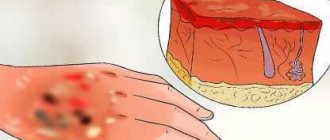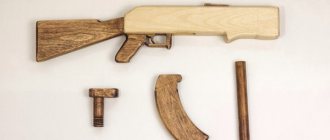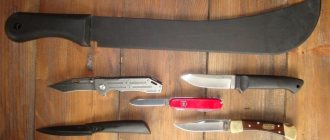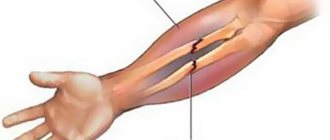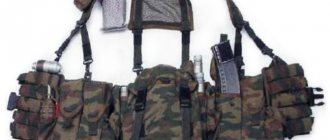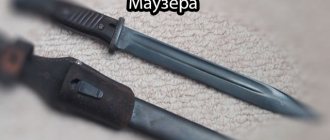A broken arm is a serious injury that causes unbearable pain in a person. This is a violation of the integrity of a bone or several bones of the upper limbs. A fracture can damage the ulna, humerus, radius, metacarpal, wrist and hand bones.
In most cases, this condition can be recognized by severe pain, bruising, swelling and limited movement. Sometimes a specific crunch and pathological mobility occurs. To diagnose this condition, the patient is sent for MRI and CT. Treatment depends entirely on the type of damage.
Causes
Both traumatic and pathological reasons can provoke the occurrence of a fracture of the arm. In some cases, this condition occurs against the background of physiological changes in bone tissue. Most often this condition is provoked by:
- Malignant neoplasms;
- Bone metastases;
- Osteoporosis;
- Myelomas;
- Tuberculosis of bone tissue;
- Disturbances in the functioning of the endocrine system;
- Genetic abnormalities.
In the vast majority of cases, arm fractures are of a traumatic nature - a force is exerted on the bone that exceeds their strength.
This usually happens during natural disasters, traffic accidents, sporting events, a fall or a strong impact. It is very important to determine the cause of this condition, because the principle of treatment depends on it.
Preventive actions
Prevention of an arm fracture includes standard recommendations from traumatologists:
- Exercise maximum caution during the cold season when moving on slippery surfaces. Choosing the right shoes with non-slip soles will help prevent accidental falls on ice as much as possible.
- To increase the stability of bone tissue, a sufficient amount of calcium and other beneficial substances must be present in the diet. Regular exercise, morning exercises, and long walks will help increase muscle tone. Seasonal vitamin therapy will prevent a lack of calcium in the bones and help increase their endurance and resistance.
A broken arm is a serious injury that should not be ignored. Timely seeking professional help will help reduce recovery time as much as possible and prevent the formation of complications.
Classification
An arm fracture is a broad concept that includes multiple injuries. It is very important for a specialist to determine the exact type of lesion in order to prescribe the most effective and appropriate treatment. Doctors usually use the following classifications.
| An approach | Varieties |
| Type of lesion | Open – soft tissue is damaged. Closed – soft tissues retain their integrity. |
| Location | Diaphyseal - bones on the body. Metaphyseal - between the end and the body of the bone. Extra-articular - at the end of the bone. |
| Fracture direction sides | Longitudinal - parallel to the bone. Helical - in a spiral. Transverse - perpendicular. Oblique - at an angle to the bone. Fractured - in the presence of multiple fragments. Splintered – with 3 or more fragments. |
| Number of damage | Multiple and isolated |
| Presence of offset | No offset. With displacement: primary and secondary, rotational, angular, along the length and width of the bone. |
| If possible, movement of fragments | Stable – no displacement occurs. Unstable - fragments continue to move. |
| Presence of complications | Complicated – in the presence of fat embolism, bleeding, infection. Not complicated. |
It is customary to classify arm fractures, which are accompanied by bone dislocation, into a separate group. This condition is complicated by serious damage to nerve fibers and blood vessels. The greatest danger is represented by Galeazzi's fracture - a condition that includes several types of fractures.
Types of damage
Broken arms are quite common in traumatology, and the injury itself comes in several varieties. The injury can be open or closed. When an open fracture of the arm occurs, the skin is damaged, and bone fragments are visible through the wound. A closed fracture of the arm characterizes the integrity of the skin and the absence of a wound. Based on the number of broken bones, the damage can be isolated (occurs in one part of the arm, for example, a hand injury) or multiple (occurs in several places at once, for example, damage to the radius of the arm and forearm).
Based on the part of the bone where the damage is localized, the fracture can be metaphyseal (between the end and the middle of the bone), diaphyseal (the body of the bone is broken), intra-articular (the fracture line passes through the epiphyseal cartilage). The last type of injury is considered the most severe, since it causes damage to the ligaments and the joint itself. The bone may also break completely or incompletely. When a crack occurs, we are talking about an incomplete fracture. Healing of such damage is quite rapid, and complications occur extremely rarely.

Types of arm fractures are also classified according to the direction of the line. If the fault line runs along the bone, then it is a longitudinal fracture; if the fault line is transverse, the damage is considered horizontal. With the helical type of injury, the fracture runs in a spiral. In addition, the fracture can be oblique, when the fracture is located diagonally.
A fracture with primary displacement occurs when bone fragments are displaced immediately at the time of injury. If muscle tissue pushes against a bone fragment some time after a person has been injured, secondary displacement occurs. A displaced fracture of the arm bone heals more slowly, and complications may occur during it. The bone can shift at an angle, go wider or longer, and also rotate around its axis.
Symptoms
A fracture is a condition in which the integrity of bone tissue is disrupted. It may be accompanied by bone coming out of the joint. Because of this, serious disruptions occur in natural processes. Most often, a person experiences a powerful increase in body temperature, rupture of soft tissues, swelling, inflammation, and severe pain. A huge number of factors can provoke its appearance; it is very important to determine exactly what triggered this phenomenon. When the first signs of a broken arm appear, you should definitely consult a doctor. The following symptoms indicate this condition:
- Visible deformation of a joint or bone;
- Acute dull pain that gradually increases;
- Excessive swelling of tissues;
- Increased pain on palpation;
- Inability to move;
- Bruising and internal bleeding.
When diagnosing a fracture of the arm, special attention should be paid to the position of the limb. If your hand is drooping and you can't keep it straight, your doctor can make a diagnosis right away. In most cases, the fracture is accompanied by thrombosis, which occurs due to rupture of the artery. Arm fractures pose the greatest danger to older people - they may continue to bleed for three days.
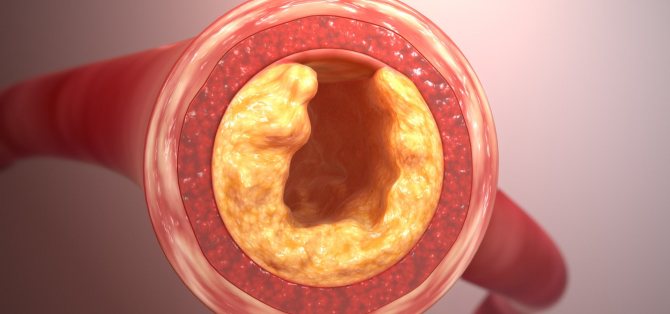
In some cases, fat embolism occurs, significantly impairing blood circulation in the tissues. Severe pain can cause a person to lose consciousness
First aid
In order for the fracture to heal normally, it is necessary to provide the patient with complete first aid. The duration of recovery and the likelihood of any complications largely depend on it. Every person should know what to do in such a situation. Conventionally, first aid can be divided into three stages:
- Early immobilization - fixation of the damaged joint to prevent movement;
- Pain relief – special medications are taken;
- Local anesthesia - cold is used for this.
It is very important to ensure complete immobilization of the damaged surface. It will depend on it whether additional displacement occurs. This will also help reduce pain and reduce the likelihood of soft tissue damage.
Keep in mind that before you fix a person’s injured limb, it is very important to remove rings, watches and bracelets from him. When a fracture occurs, swelling always occurs - because of this, the arm begins to enlarge, and the jewelry begins to compress the blood vessels. This negatively affects blood circulation.
After this, bend the patient’s arm at the elbow joint at a right angle - this is a physiological position in which the pain will significantly decrease. The brushes should be directed upward. Carefully fix this position, and then look for drugs based on non-steroidal anti-inflammatory components. With their help, it will be possible to significantly reduce pain. The most popular medications in this group are Diclofenac, Ketonov, Ibuprofen, Dexalgin.
You must take medications strictly according to the instructions. Be sure to remember the name of the medicine; you will need to tell your doctor about it. You can take medications either in the form of injections or tablets. To further reduce discomfort, applying a cold compress is recommended. It must be prepared extremely carefully; the ice must be wrapped in several layers of cloth. This will help prevent injury to the skin.
First aid for an open arm fracture
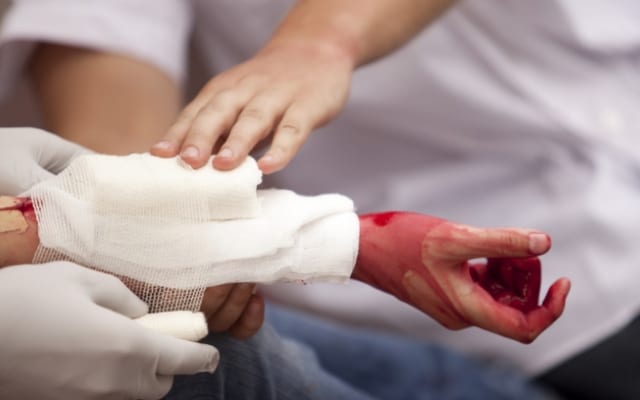
First aid for an open fracture consists of stopping bleeding, preventing infection from entering the blood, disinfecting surrounding tissues, pain relief, preventing the occurrence of painful shock, and immobilizing the injured limb.
To stop bleeding, you need to apply a tourniquet over the injury site at a distance of 10-15 cm. Instead of a tourniquet, you can use a regular belt. It is especially important to stop the bleeding as quickly as possible if it is bright scarlet in color - this indicates arterial bleeding. An hour and a half after applying the tourniquet, you need to loosen it so that cell death in the tissue of the limb does not begin. Next, you should rinse the open wound with hydrogen peroxide and clean water to disinfect the wound and prevent inflammation. The edges of the wound can be treated with iodine, brilliant green or any alcohol-containing liquid. If the bleeding from the wound is venous, it is not necessary to tighten it with a tourniquet, but rather apply a tight bandage.
After the bleeding has stopped, the victim needs to take pain medication, as in the case of a closed fracture. With an open fracture, a person's body temperature may rise. If it occurs within the first 24 hours after the injury, the victim urgently needs to seek medical help. If it appears after two or three days, it is enough to take anti-inflammatory drugs and analgesics.
After the measures taken, the broken arm is fixed with a splint. It is applied on the opposite side of the protruding bone; before fixing it, something soft must be placed on the protruding part of the bone.
Treatment
Therapy for arm fractures is selected on a strictly individual basis. The doctor needs to determine the type of injury, its exact location, and the presence of any complications. With a closed fracture, the patient undergoes reposition; with an open fracture, it is impossible to do without surgery. If it occurs without displacement of the fragments, then the patient is given a plaster cast. It is very important to follow all the recommendations of the attending physician so that the fragments heal properly. Painkillers and calcium-based vitamins are prescribed during treatment.
The functionality of the limb can be restored only after full recovery and with the permission of the attending physician. First of all, you need to do everything possible to get rid of swelling. Only after this can the specialist refer the patient to physical therapy therapy. In some cases, surgery is performed to treat the fracture. The surgeon independently determines the location of the bone. Typically, surgery is indicated for malunion or persistent pain.
100% way to break an arm
So, how to get a fracture without pain (I think it will hurt you if you are not drunk, of course). We recommend buying a painkiller at the pharmacy or, if possible, asking a nurse you know to inject you with a painkiller, since doctors know a lot about this. If this is not possible, then you can cool your hand or lightly freeze it by wrapping it in an ice towel, for example.
- Punch your fist into a concrete wall or asphalt as hard as you can.
- Make a fist and fall to the floor from your height, landing on your fist. It’s the same as hitting a concrete wall, but perhaps more painful.
- Drop a refrigerator onto your hand from human height or ask a friend. We recommend that you think 100 times before turning your limb into a chop.
- Find a surgeon you know and ask for help.
- Place your hand on the toilet and ask your friend to jump on top, just don’t remove your hand otherwise your friend will break his leg. This is how they broke the DMB in the film.
- Go to an ice skating rink and fall on your hand or from accelerating into a fence, perhaps the wrong thing will break.
- Play hockey without equipment and protection, you can be completely broken.
- Have someone step on your hand and twist your fingers.
- Hit your hand with a hammer.
- Hit the forearm with the crowbar.
- Get your hand pinched by a heavy iron front door.
- Ask the local gopniks to be their punching bag, I’m sure they won’t refuse you, but for the promotion they can break your other arm, or whatever you want.
- Go to a disadvantaged area, show off with a top-end phone, show off to the local authoritative boys.
- Place your hand under the wheel of a truck (Kamaz, Zil or gazelle will do).
- Ride on roller skates, a scooter or a bicycle down a hill and hit a bump or curb at a decent speed, the flight will be unforgettable, you can break anything, if you use this method, we recommend wearing a helmet and equipment.
- Extend your arm so that when opening the door the blow falls on it, ask a friend to open the door with his foot. This method will only work on wooden doors or light metal ones.
Fracture surgery
In some cases, a broken arm requires surgical intervention.
Most often, it is referred to when bone fragments are displaced during fusion or when they are incorrectly placed before applying plaster. At the moment, doctors adhere to the osteosynthesis technique.
It is necessary to take into account that the earlier the operation is performed, the lower the risk of complications.
After a second fracture, the doctor independently composes the fragments, after which he secures them with special metal knitting needles, bolts and plates. The duration of the recovery period and the features of the operation depend on the type of fracture. If the intervention is performed on older people, then the metal components are not removed after healing.
Symptoms
Symptoms of a broken arm largely depend on the type of injury and its location.
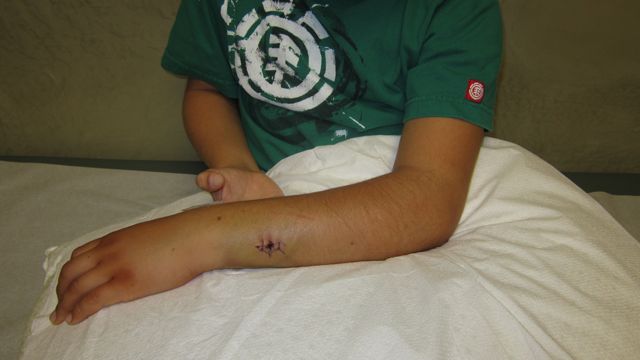
Symptoms of a broken arm can be obvious, causing no doubt about the fracture, or relative, by which one can only suspect that the bone is broken. The obvious signs of a fracture are:
- the limb becomes deformed; if there is a displacement, then with the naked eye you can see that it has a shortened or elongated appearance;
- pathological mobility is observed in places where there should not be mobility (outside the joints);
- upon palpation, the doctor and patient can hear the characteristic sound of fragments rubbing against each other;
- With an open fracture, bone may protrude from the wound and blood may flow.
Relative symptoms of a fracture indicate damage, however, relying only on these signs, it is impossible to make an accurate diagnosis:
- The very first symptom is that a person’s arm hurts after a fracture. Painful sensations can be localized both at the site of damage and spread to nearby areas;
- tissue swelling occurs at the site of damage, this is due to a violation of lymph outflow;
- a hematoma develops from damage to blood vessels; if it pulsates, this indicates heavy internal bleeding;
- if large main arteries are ruptured, the limb becomes cold to the touch;
- there is a disturbance in motor activity in the joint near which the damage occurred;
- When the nerve processes are damaged, the mobility and sensitivity of the fingers are impaired.
Similar symptoms may also be present with less dangerous injuries, for example, with bruises and sprains.
In order to confirm or deny the presence of a fracture, you need to go to the trauma center and take an x-ray. In the image, the treating doctor will be able to see the type of injury, after which he will determine the treatment tactics.
Duration of fusion
Many people immediately after starting treatment wonder how long it takes to recover from a fracture. It is impossible to say unequivocally how long everything will happen - it all depends on the individual characteristics of the body, as well as the location of the fracture. If your fingers are injured, recovery may take several weeks. The hands, on the other hand, need at least 2 months to fully heal, the same amount of time it takes for the forearm to recover.
To speed up the fusion of bones, it is necessary to provide them with complete rest - constant movement aggravates the course and can provoke the development of complications.
Treatment of arm fractures in hospital
In case of serious damage to the arm, treatment of the fracture requires constant hospitalization. This measure reduces the risk of debris moving through soft tissues. Also in the hospital, doctors can prescribe patients more powerful medications that help quickly relieve pain and swelling.
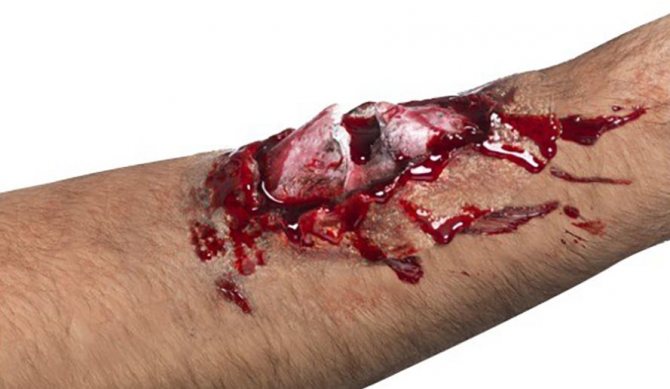
Most often, open fractures are treated in hospitals.
Closed fractures require hospitalization if a nerve is pinched, blood vessels or tendons are damaged.
Signs of a fracture
Now you know how to break a finger or toe. And in order to make sure whether you have achieved the desired results or not, we offer a detailed list of signs that a fracture is still occurring:
Master in Diabetes Education from Santa Casa Belo Horizonte. Do you consider yourself an educated person who can succeed in any social situation? If this is the thought of you, know that you are wrong. If you're not English, it's true that you break several rules of etiquette every day without even noticing, you know?
And it looks like it's not your mother's fault, huh? Despite the fact that everyone learns at home that eating with your mouth open, and that putting your elbows on the table is prohibited, most of the rules of etiquette that people ignore are so despised precisely because they are very specific and, in most cases, because that they are not even known.
However, it is worth noting that only a radiologist or surgeon can give you the most accurate diagnosis, and only after a thorough examination. In this regard, you should immediately go to the hospital and minimize the consequences of the damage.
Rehabilitation
In order for the hand to recover as quickly as possible after a fracture, it is necessary to undergo a comprehensive rehabilitation process. This will help keep newly secured debris in place. Full rehabilitation includes physical therapy, various physical procedures, massage, and light exercises. Already 3-5 days after applying the plaster, the patient needs to begin to develop the fingers of the injured hand. This will help prevent complete muscle atrophy.
After 1-2 weeks, the patient is sent for various treatment procedures. The most popular are exposure to infrared currents and ultraviolet irradiation. 10 sessions are enough for these manipulations to relieve the patient of pain and discomfort. 2 weeks after injury, the patient needs to begin muscle tension. A week after removing the plaster, the following procedures must be carried out:
- Magnetotherapy – magnetic fields of a certain length have a positive effect on blood circulation, with their help it is possible to relieve swelling and significantly speed up healing;
- Laser therapy is a procedure that helps improve blood circulation and relieves inflammation;
- UHF is the effect of electrical impulses on the skin. The procedure allows you to get rid of pain and inflammation;
- Ultrasound significantly increases the permeability of cells, due to which they accept more nutrients.
On average, a patient is prescribed from 6 to 10 such procedures. Additionally, after removing the plaster, therapeutic mud, paraffin baths, and pine baths can be prescribed. All this contributes to accelerated recovery: normalizes blood circulation and relieves pain. It is very important to engage in physical therapy, which promotes greater stretching of muscle tissue. Keep in mind that everything needs to be done carefully, under the strict guidance of a specialist. At home you can do light complexes 3-4 times a day.
Massage is no less important in the rehabilitation of patients after a broken arm. It should be performed by a professional in a clinic. All movements must be carried out carefully, starting from a healthy area of the limb. Only after 2-3 months is it permissible to massage the damaged surface. Intense massage movements are permissible only after the formation of a callus. To improve accuracy, it is recommended to engage in knitting, embroidery, and drawing. Only with an integrated approach will you be able to fully recover from such an injury.
How to quickly cure a broken arm: effective methods – Without a fracture
All people face various injuries from time to time, and everyone wants to quickly restore their health and continue living a full life. After serious injuries, the most interesting question is usually how to speed up the healing of bones during a fracture.
Before answering this question, you need to study the process of bone fusion, determine the time of fusion, and then follow the recommendations to speed up recovery from damage.
How does healing occur during a fracture?
The fusion process occurs in several stages, at each of which the body adapts to the changes and restores the damaged part of the body.
- Inflammation. When a bone is broken, remnants of bone tissue can enter the bloodstream, which the body must rid of. To eliminate the problem, white blood cells rush to the site of damage and when foreign substances are removed from the blood, inflammation is caused, at the same time the production of new blood cells is stimulated.
- Soft callus. A callus of fibrous (connective) tissue forms around the fracture site. Thanks to its properties, the broken bone begins to heal and can remain in the desired position. The edges of the broken bone are aligned and smoothed.
- Tough callus. After the soft callus has completed its functions, it turns into a hard callus that holds the bone fragments in the position in which they should be. A hard callus is not yet a full-fledged bone, it is fragile and can be damaged, so complete immobility and limitation of motor activity are important at this stage.
- Remodeling (structural change). At this stage, the callus is replaced with a full piece of bone, which connects the broken bone, making it whole. The blood supply to the bone tissue around the damaged bone is restored and functions can be fully performed again. Immediately after restoration, the new fragment is not as strong as a regular bone, so it is recommended to monitor your health and not immediately put a large load on the newly healed part of the body. And before the final recovery and the moment of full rehabilitation, it can take from several weeks to a year.
Duration of bone healing after a fracture
Those who are interested in how quickly bones heal after a fracture need to know that the healing process depends on many factors. It can occur differently in all people, and even an experienced doctor cannot always say exactly how long it will take for bone function to be fully restored.
Here are some important factors that influence fusion time:
- Age. In young people, regeneration occurs much faster than in older people. In childhood, complete recovery may take even less time and undesirable consequences are usually not observed at a young age.
- Type of injury. With a closed fracture, the bones will heal faster than with an open one. During an open fracture, an infection often enters the human body, which will slow down the recovery process or complicate it with additional problems. If ligaments and muscles were damaged during an open fracture, regeneration will take a long time.
- Structure and size of bones. Spongy bones (for example, carpal bones) grow together much faster than tubular and flat bones. Smaller bones will heal faster than larger ones.
- The presence of inflammatory processes or multiple injuries. With extensive damage, the body quickly uses up energy and cannot quickly cope with a heavy load. If several fractures occur at the same time, each bone will heal more slowly than in the case of a single injury.
- Providing first aid. If a person consults a specialist some time after the injury, additional damage is possible, and therefore healing will take longer. If care is provided incorrectly, hemorrhages and injuries are possible, which negatively affects the fusion process and disrupts blood circulation in the damaged bone.
- Poor metabolism and weight problems. Exhaustion of the body or excess body weight negatively affects bone healing. Impaired metabolism also slows down regeneration.
All these factors must be taken into account, and in order for the fracture to heal faster, you can take simple actions that have a positive effect on the healing process.
What to do to make the fracture heal faster
Despite the presence of factors that cannot be influenced, there are ways to alleviate the condition and greatly speed up the healing of bones during fractures. This depends both on the medical prescriptions and on the patient himself.
Methods for eliminating a fracture of the femoral shaft
Immobilization
The doctor’s very first order after x-rays and diagnosis is to immobilize the bone. If necessary, the bone is placed in the desired position before this, or surgery is performed.
Complex displaced or comminuted fractures almost always require this emergency measure. During the operation, crushed bone fragments, fragments and damaged tissue are removed.
Sometimes fixation plates, medical nails or screws are used. After the bone is fixed in the proper position, a plaster cast is applied; if this is not possible, complete rest is ensured.
Rehabilitation
Since the bone will remain immobilized for a long time, the joint may lose its ability to function fully and the muscles may weaken. To prevent such unpleasant consequences from occurring, a set of rehabilitation measures is recommended, which includes:
- Exercise therapy. Physical education usually begins on the second or third day after surgery or a plaster cast. Passive movements improve blood circulation, which allows callus to grow faster. Therapeutic exercise prevents muscle atrophy and allows joints to remain mobile. After the callus has become strong enough, more intense exercises are prescribed to restore the functions of the injured area. You can develop fine motor skills through modeling, writing, drawing, and handicrafts. All recommendations and advice on exercise therapy are given by a specialist individually for each patient. Special exercises allow tissues and muscles to be in working condition even in the presence of a cast. In case of injury to the upper extremities, hygienic gymnastics are prescribed, during which the patient learns how to perform basic self-care. Thanks to such exercises, a person can perform simple household chores, and the muscle tone of intact parts of the body increases.
- Massage. In the very first days after a fracture has occurred, a specialist may decide to prescribe a course of massage. It serves to activate metabolism in the place where the fracture occurred, improves blood flow, saturates damaged tissues with oxygen, helps reduce swelling and eliminate muscle spasms. In accordance with the type, location, nature and severity of the fracture, one of the therapeutic massage techniques is selected. In some cases, self-massage is possible, but only after training by a specialist and demonstration of the techniques in practice.
- Physiotherapy. Thanks to physiotherapy, it becomes possible to reduce pain and swelling, accelerate the formation of callus, prevent complications or combat their consequences. Also, procedures can enhance the effect of medications, reduce their dosage and eliminate side effects. The main methods of physiotherapy used to accelerate bone healing after a fracture:
- Bromine electrophoresis;
- Interference currents;
- Therapeutic baths with iodine or sea salt;
- Use of UV rays;
- Magnetotherapy;
- Laser therapy.
After removing the plaster cast and the onset of the recovery period, therapeutic exercises are aimed at restoring muscle tone and active joint function. The patient needs to re-learn how to coordinate movements, restore previous abilities and skills.
For complete recovery, together with medical help, you need to make independent efforts to restore the body.
How to speed up the healing of a fracture at home
In addition to medical procedures, it is necessary to take care of the health of the damaged part of the body yourself. In order for bones to heal faster during a fracture, you can follow simple recommendations and rules. Such advice also applies to those who have decided to lead a healthy lifestyle, but after an injury they are especially relevant.
Proper nutrition. It is important to eat foods rich in calcium, vitamins, and minerals. To heal bones and build up bone material, you must eat enough fruits, vegetables, nuts, berries, dairy products, fish, and meat.
Jellied meat, jelly, buckwheat porridge, beans, natural marmalade, sesame seeds promote faster growth. You should avoid foods that contain large quantities of salt, such as salted or smoked fish, cheese, sausage, and canned food. Mayonnaise, margarine, sweets, carbonated water, coffee, and alcohol will also not be very beneficial for the body.
Vitamins. If you do not get enough vitamins from food, you can take vitamin complexes. Especially in winter, the body suffers from a lack of essential microelements, and in the spring it may experience vitamin deficiency, which, in combination with a recent injury, can have a bad effect on the healing process of the fracture.
Rejection of bad habits. Smoking, alcohol in large quantities, overeating will not contribute to rapid recovery. During the rehabilitation period, it is necessary, if possible, to eradicate all bad habits.
Following the doctor's recommendations. The doctor prescribes the necessary treatment, medications, procedures, but it depends only on the patient how faithfully he will follow the prescriptions.
You should not prescribe additional medications on your own or do exercises recommended by friends, acting out of good intentions.
If pain occurs, poor bone healing and other problems, only a specialist can prescribe adequate treatment. Self-administration of anti-inflammatory drugs can cause the bone to heal very slowly.
Rest. With bone fractures, healing is accelerated thanks to proper rest, sufficient sleep and limiting loads. The damaged bone should be especially protected from excessive stress, otherwise you can accidentally displace it or damage the weak callus.
Traditional methods for accelerating bone healing
In addition to traditional medicine and recovery at home, you can use folk tips that were successfully used by your ancestors:
- Mumiyo. The wound-healing properties of this natural substance have been known for a long time, and it is ideal for healing injuries. Callus can form faster and bone tissue can regenerate faster when using this resin-like product. It is recommended to take mumiyo in courses lasting 10 days, which should be from 3 to 5. The medicine can be washed down with a small amount of milk or natural juice (fruit or vegetable); You should drink it once a day, in the morning, two hours before meals. The daily dose for an adult is 0.2 g. Contraindication for use is the presence of malignant tumors.
- Eggshell. It contains a lot of calcium, which helps during bone fusion. It is very simple to prepare it for consumption - you need to immerse the clean shell in boiling water for one minute, then finely crush it. You need to consume this product one teaspoon twice a day. Some people hard-boil three eggs and pour lemon juice from one lemon into their shells. After the shell is completely dissolved, the resulting product is consumed one tablespoon twice a day.
- Fir oil. Its anti-inflammatory properties can help reduce pain and speed up metabolic processes. Knowledgeable people advise making small balls from bread crumbs and dropping 3-5 drops of fir oil on them. By consuming these balls three times a day, you can improve your well-being and avoid discomfort. For those who like to take a bath, another recipe is suitable: pour 20-25 drops of fir oil into warm or slightly hot water, add a couple of tablespoons of honey and sea salt. You can take a bath for 15-25 minutes. Before use, you need to read the instructions, as in some cases there are contraindications.
- Rose hip. A tablespoon of its fruits must be poured with two glasses of boiling water, then allowed to boil for 10-15 minutes and left for a day in a dark place. After straining, the broth should be consumed half a glass 2 times a day before meals.
- Onion. Onion decoction will help speed up bone healing. First, two medium onions need to be fried in a small amount of sunflower oil until golden brown. After frying, transfer the onion to a pan with already boiling water (1 liter) and boil for 10 minutes. It is better to take this medicine on an empty stomach, drinking one glass.
Source: https://standorto.ru/diagnostika/kak-bystro-vylechit-perelom-ruki-effektivnye-metody.html
Complications
A broken arm is a dangerous condition that requires immediate medical attention. If you do not provide a person with the necessary operations, he may develop serious complications that will torment him throughout his life. The greatest danger is posed by an open fracture, which is characterized by a long recovery period and massive damage.
In most cases, patients encounter the following complications:
- A false joint is a phenomenon in which connective formations begin to form at the ends of a broken bone. Because of this, the bones remain mobile and the functionality of the limb is significantly impaired.
- A purulent-inflammatory process - at the site of bone injury, a person develops an extensive hematoma, the lack of influence on which can lead to the formation of phlegmon or an abscess.
- Infection is one of the most dangerous complications, which most often occurs after an open fracture. Various infections and bacteria enter a person’s wound, which provoke the development of an inflammatory process. Because of this, pus is produced, and some tissues may die.
- Deforming osteoarthritis is a condition that occurs due to damage to the joint. Because of this, his mobility is impaired. Most often it occurs due to prolonged stay in a cast or wearing a plaster cast.
- Shortening of the limb - occurs against the background of displacement of fragments and their improper fusion.
First aid for a broken hand
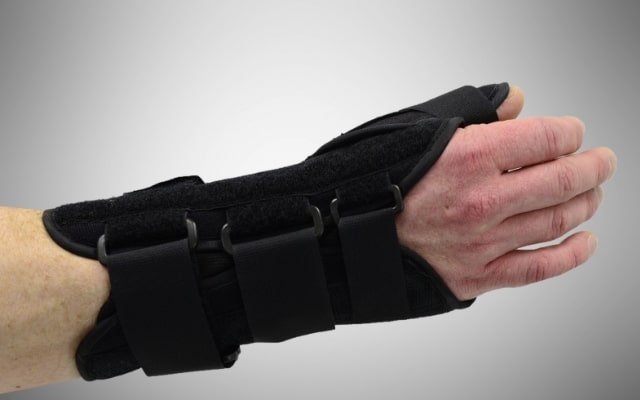
The easiest thing to break is the hand, since it is the most fragile part of the upper limb. In this case, fractures are classified into damage to the metacarpal bones, wrist, one or more phalanges of the fingers. First aid for a broken hand is as follows:
- Immediately remove all rings from your fingers to avoid tissue necrosis.
- Apply an ice pack or other cooling agent wrapped in a cloth.
- If there is open bleeding, a tight bandage must be applied.
- The brush is wrapped in a bandage, which is thrown over the shoulder and around the neck. Immobility prevents bones from moving.
- The victim should be given pain relief.
After these measures have been taken, the victim must be taken to the nearest emergency room. He must ride while sitting, holding the injured one with his healthy hand so that it does not move while moving.

